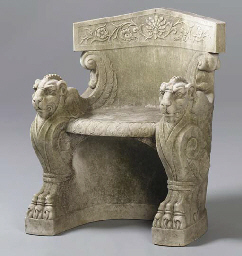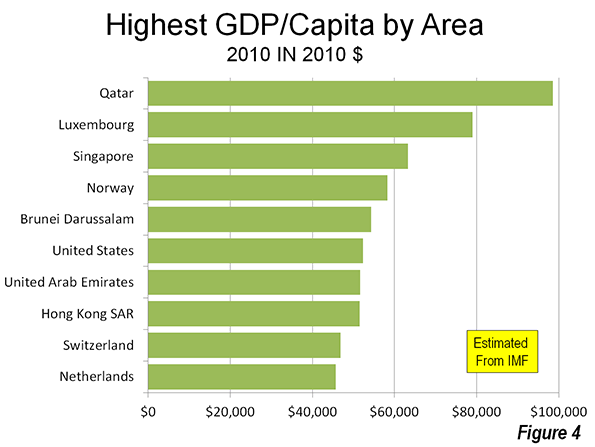Content

A further increase of financial leverage will result in an increase of WACC as far as the marginal cost of debt will be higher than the marginal cost of equity due to higher risks. The cost structure of value is also known as the capital structure of valuing a firm. The theory of the traditional structure of valuing a firm suggests that there is an optimal debttoequity ratio that has a minimum overall cost of capital and maximum market value of a firm. On the sides of this point, changes in the financing mix can bring positive changes to the value of a firm. Moreover, before this point, the marginal cost of debt is less than the equity cost; and after this point, the cost of equity is less than the cost of debt.

The approach
suggests that the firm can initially lower its cost of capital and raise its total value through leverage. Although investors raise the expected rate of return because of increased risk perception, the
increase in the cost of equity (ke) does not offset entirely, the benefit of using ‘cheaper’ debt funds. In this paper, we apply the trade-off theory of capital structure to Microsoft. We use data for bond ratings, bond risk premiums, and levered CAPM betas to compute the cost of equity and the weighted average cost of capital for Microsoft at different debt levels.
As such, the levered firm will enjoy a higher market value than the unlevered firm. They advocated that the weighted average cost of capital does not make any change with a proportionate change in debt-equity mix in the total capital structure of the firm. With the increase in leverage, the investors start demanding a higher equity rate of return from the
firm.
Understanding the Traditional Theory of Capital Structure
The traditional approach to capital structure assumes that an increase in the proportion of debt to some extent does not result in an increase in the cost of equity, i.e., it remains fixed or grows slightly. That is the reason why it becomes possible to reduce the weighted average cost of capital (WACC) by increasing the proportion of debt financing in total capital. Thus, firms using financial leverage within certain limits are valued higher by the market than similar companies with lower financial leverage. The traditional approach to valuation and leverage assumes that there is an optimal capital structure
and that a firm can increase its total value through the judicious use of leverage.
Traditional Approach to capital structure assume that the value of the firm increases with debt to a definite point, then remains constant with judicious use of leverage and falls at last. Therefore, the main substance of Traditional Approach is that cost of capital rely on capital structure and hence there exists an optimum capital structure. Net Income Approach on the other hand, concluded that cost of utilizing equity and debt remains constant with variation of debt-equity ratio. This logically means the average cost of capital diminishes as debt-equity ratio increases with the value of the firm.
Capital Structure Theory # 3. Traditional Theory Approach:
The firm keeps borrowing until the equity rate of return demanded by the investors offsets the
benefit of ‘cheaper’ debt funds. For example, a company using the net operating income approach sees no correlation between debt or equity financing and company value. Thus, the company seeks financing that is the easiest and quickest to secure. Capital structure refers to the mix of different types of capital that a company uses to finance its operations and growth.
(iii) He will purchase by having Rs. 5,333 (i.e. Rs. 3,333 + Rs. 2,000) 1.007% of equity from the firm ‘A’.
The optimal capital structure may vary for each company, depending on industry, business risk, and tax environment. The theory assumes that investors are rational, and markets are efficient, and a company’s capital structure decision is driven by its desire to maximise shareholder wealth. Thus, an increase in the use of apparently cheaper debt funds is offset exactly by the corresponding increase in the equity- capitalisation rate. So, the weighted average Cost of Capital Kw and Kd remain unchanged for all degrees of leverage. Needless to mention here that, as the firm increases its degree of leverage, it becomes more risky proposition and investors are to make some sacrifice by having a low P/E ratio. Since the amount of debt in the capital structure increases, weighted average cost of capital decreases which leads to increase the total value of the firm.
Modigliani-Miller (MM) Theory
(iii) The cut-off point for investment is always the capitalisation rate which is completely independent and unaffected by the securities that are invested. The following points will highlight the top four theories of capital structure. Management of STAR S.E. Inc. may reach the minimum WACC of 15.5% when its capital structure is represented by 30% of debt and 70% of equity.
The net income approach says there is a direct relationship between the company’s capital structure and its value. The net operating income approach proposes that capital structure decisions by a company have no bearing on the company’s value. The traditional approach suggests there is an optimal debt and equity relationship, where the market value of the company is maximized and the cost of capital is minimized. The Modigliani-Miller theory proposes that a company’s valuation is irrelevant to its capital structure; that is, the value is not affected by high or low debt levels.

When financial leverage equals to 0, i.e., the capital of a firm is represented by equity only, its WACC is equal to the cost of equity. As the financial leverage increases, the WACC will decrease until the marginal cost of debt is lower than the marginal cost of equity. The minimal value of WACC is reached when the marginal cost of debt equals the marginal cost of equity. Such a capital structure is considered as optimal under the traditional approach.
We have seen (while discussing MM Hypothesis) that MM Hypothesis is based on some assumptions. There are some authorities who do not recognise such assumptions as they are quite unrealistic, viz. In the above circumstances, equity shareholder of the firm ‘A’ will sell his holdings and by the proceeds he will purchase some equity from the firm ‘B’ and invest a part of the proceeds in debt of the firm ‘B’.
Net Operating Income Approach of Capital Structure
The optimal capital structure should also take into account the company’s growth and investment plans, including potential acquisitions, expansion into new markets, and R&D initiatives. These plans can impact the company’s financing needs and risk profile, and may require a more flexible or diversified financing mix. The optimal capital structure may also be influenced by the company’s industry and market conditions, including competition, regulatory environment, and macroeconomic factors. These factors can affect the company’s risk profile, growth prospects, and financing needs. The trade-off theory of capital structure can help traders and investors to evaluate the valuation of a stock as part of fundamental analysis.
Iii) All investors have the same expectations
from a firms’ EBIT that is necessary to evaluate the value of a firm. 7)
The investors have the same subjective
probability distribution of expected earnings. 3)
There are no retained earnings implying that
entire profits are distributed among shareholders. As such, cost of borrowing will be higher in case of an individual than a firm.
- A further increase of financial leverage will result in an increase of WACC as far as the marginal cost of debt will be higher than the marginal cost of equity due to higher risks.
- The approach
suggests that the firm can initially lower its cost of capital and raise its total value through leverage. - For example, we know that interest charges are deducted from profit available for dividend, i.e., it is tax deductible.
- (iii) The market value of the debt is then subtracted from the total market value in order to get the market value of equity.
Too much debt will increase the cost of debt and increase shareholders’ risk, which also raises the cost of equity. According to the traditional approach, as a firm increases its level of debt, its cost of capital initially decreases due to the tax benefits of interest payments. However, beyond a certain point, the cost of debt financing increases due to the increasing probability of financial distress and bankruptcy. As a result, there is an optimal level of debt that a firm should maintain to minimize its overall cost of capital. A company’s weighted average cost of capital (WACC) plays a key role in determining its value. WACC is determined by the capital structure and is the required rate of return that equity and debt holders expect.
Modigliani-Miller Theories of Capital Structure
The theory suggests that there is an optimal mix of debt and equity financing for a company, and that this mix depends on balancing the benefits and costs of each type of financing. There are limitations to the trade-off model, such as an overemphasis on tax benefits and traditional approach capital structure a lack of consideration for non-financial factors. However, alternative theories, such as the pecking order theory, signalling theory, market timing theory, agency theory, and free cash flow theory, also provide valuable insights into a company’s financing decisions.
As financial leverage increases, the WACC decreases until the optimal debt ratio is reached, after which, the WACC begins to rise. An optimal capital structure is also regarded as an optimal debt to equity ratio in this traditional theory. The traditional theory of capital structure maintains that the capital structure of a company ( a mix of debt and equity capital) is an important metric in gauging the value of the company. However, an optimal structure of capital exists when the overall cost of capital of the firm is reduced and the market value of the firm or its assets maximized. In one variation of the traditional approach, ke is assumed to rise at an increasing rate with leverage,
whereas the before-tax cost of debt (ki) is assumed to rise only after significant leverage has
occurred.
I) The overall cost of capital remains
constant for all degree of debt equity mix. From the table presented above, it is learnt that value of the levered firm ‘B’ is higher than the unlevered firm ‘A’. According to MM, such situation cannot persist long as the investors will dispose-off their holding of firm ‘B’ and purchase the equity from the firm ‘A’ with personal leverage. (i) the process of financing, and (ii) their total market value, the shareholders/investors will dispose-off share of the over-valued firm and will purchase the share of under-valued firms. (a) The cost of debt capital, Kd, remains constant more or less up to a certain level and thereafter rises. It is accepted by all that the judicious use of debt will increase the value of the firm and reduce the cost of capital.
